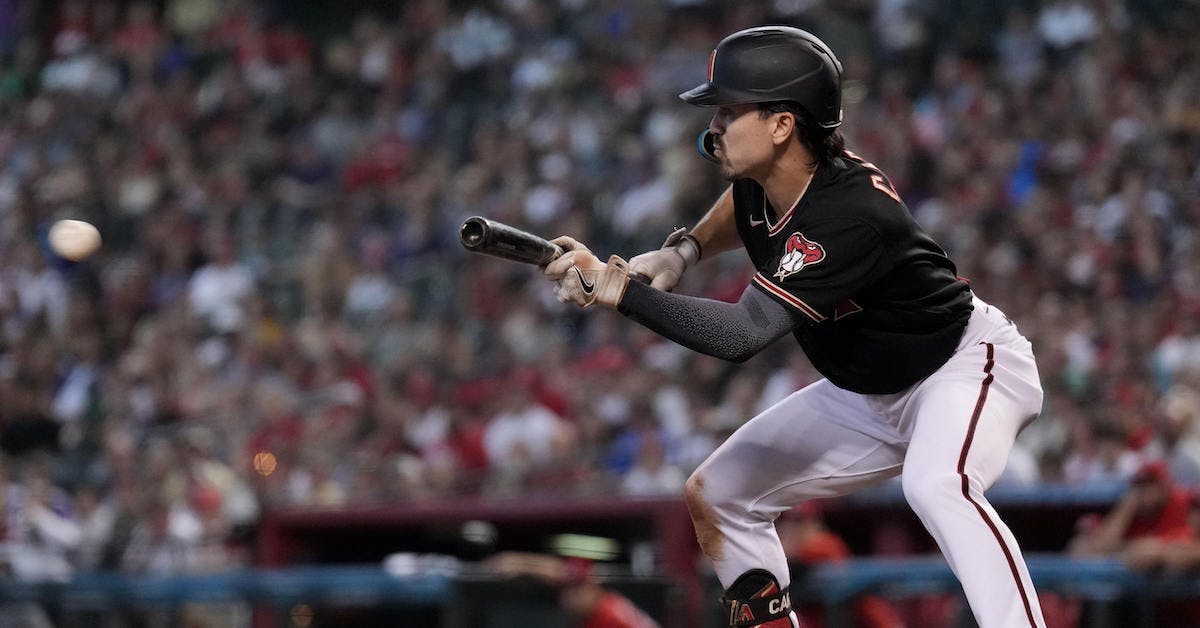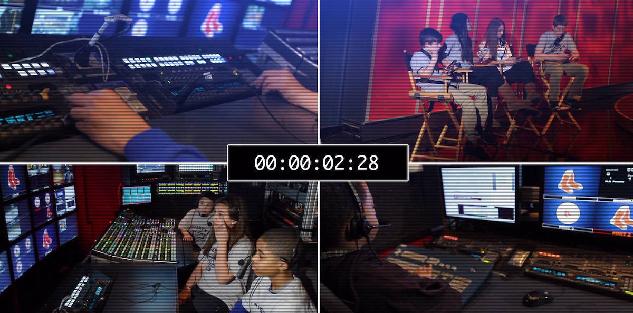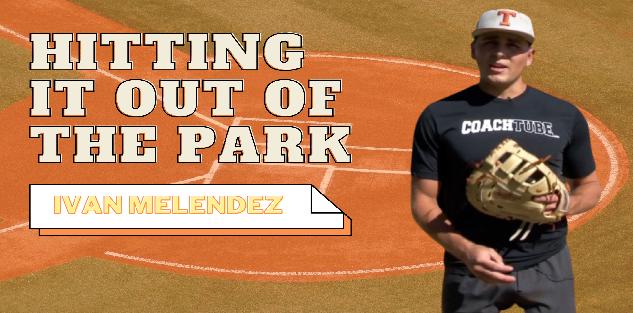Featured courses
- Understanding The Shift by Brandon Ogle
- Two Drills to Improve Outfield Movement and Communication by Grant Young
- The Ultimate Resource For Coaching Youth Baseball by Jackson Chlebowy
- Become a Master at Bunting by Brandon Ogle
- 5 Reasons Why There Is More To Good Base Running Than Just Speed by Brandon Ogle
- Three Injury-Prevention Tips For Your Offseason Pitching Program by Grant Young
- How to Teach Hitting to the Next Generation by Grant Young
- Developing Defensive-Minded Baseball Catchers by Grant Young
- 3 Baserunning Tips to Score More Runs in Baseball by Grant Young
- 5 Outfield Drills to Work on in Season by Alec Burris
- Keys For Scoring More With Runners on First and Third Base by Grant Young
- How to Develop Your Game to Become a Five-Tool Player by Brandon Ogle
- 3 Coaches Share the Keys to Running Baseball Practice the Right Way by Grant Young
- Four Drills to Sharpen a Baseball Hitter’s Vision at the Plate by Grant Young
- Four Quotes to Hit Better With Two-Strikes by Grant Young
- Four of Former MLB Pitcher Juan Nieves’ Movement-Based Pitching Drills by Grant Young
- Two Tips For Developing an Elite Baseball Bullpen by Grant Young
- Overcoming the Four Challenges of Indoor Baseball Practices Because of Weather by Grant Young
- Three Tips to Make Your Baseball Team Mentally Tougher by Grant Young
- Three Priceless Philosophies to Motivate Your Baseball Team by Grant Young
- Three Offseason Baseball Drills to Simulate Competition by Grant Young
- Three Baseball Offseason Strength and Conditioning Essentials by Grant Young
- Important Ways to Improve Your Baseball Team’s Baserunning by Grant Young
- Three Ways to Perfect Hitting Mechanics From an MLB Icon by Grant Young
- Catchers can influence pitchers...for bad or good by Drew Johnson
- Throwing Strikes and Playing Good Defense Equals Wins by Jose Ortiz
- Legendary Indiana Head Baseball Coach Bob Morgan’s Offensive Theory by Grant Young
- Tennessee Head Baseball Coach Tony Vitello on How to Practice Baserunning by Grant Young
- Three Great T-Ball Drills For Youth Baseball Players by Grant Young
- How to Manage a Baseball Pitching Staff by Grant Young
- Three Uncommon Tips to Become a Better Hitter by Grant Young
- How a Baseball Coach Can Develop Strike Throwers by Grant Young
- Drills to Develop Elite Baseball Outfielders by Grant Young
- Baseball Training Exercises to Strengthen Arm and Bat Speed by Grant Young
- How to Use Bunting to Score More Runs by Grant Young
- How To Build An Elite Baseball Infielder by Grant Young
- Three Drills to Improve Your Baseball Team's Infield Play by Grant Young
- Three Keys to Curating a Pitching Staff’s Success by Grant Young
- 3 Techniques to Develop a Baseball Player’s Hitting Approach by Grant Young
- How to Cultivate Confidence Within Your Pitchers by Grant Young
- 5 Every Day Drills To Help You Become A Better Catcher by tyler Linderman
- How to Throw A Curveball by Brandon Ogle
- How to Assemble a Lock-Down Bullpen by Brandon Ogle
- How to Throw a Sinker by Brandon Ogle
- How to be a Smart Baserunner by Brandon Ogle
- Improving a player's slugging average by Phillip Woolgar
- The 8 Fundamentals of Pitching by Drew Johnson
- How to Throw a Deceiving Changeup by Brandon Ogle
- Step Up Your Outfield Defense With These Three Drills by Jose Ortiz
- 8 Baseball Drills Every Player Should Practice by Drew Johnson
- How To Become An Elite Defensive Outfielder by Tyler Linderman
- 5 Tips For Crushing A Curveball by Johnny Grassi
- LEGENDS FOR YOUTH INCLUSION BASEBALL CLINIC by Phil
- Fourteen Ways To Turn A .300 Hitter Into A .210 Hitter by Jay P. Granat, Ph.D.
- How To Become The Ideal Leadoff Man by Brandon Ogle

How to Use Bunting to Score More Runs
- By Grant Young
Bunting is often deemed one the most boring things about playing baseball. Not only does just about every baseball player hate doing it, but their aversion to learning the art of small ball makes it difficult for a coach to get these players to improve their bunt game.
Yet, even though players may not want to admit it, bunting is a crucial component of a team’s offensive repertoire; especially in the game’s lower levels, where players can’t rely on massive power or sheer talent to bring runners across home plate.
And while it’s unlikely that your players will ever get excited about getting a bunt sign during a game, teaching them how to get hits (and increase their batting average) via the bunt is a great way to at least get them to not pretend like they missed your sign from the third base coaches box.
Longtime high school baseball coach Brandon Bibbert has turned bunting into something of an art form. Coach Bippert just completed his eighth year as the head baseball coach at Warren High School and has 121 career wins. Other coaching stops include William H Taft, Odessa High, and Lytle High School. Bippert is member of the executive committee of the San Antonio Area Baseball Coaches Association and is a Region 4 Director in the Texas High School Baseball Coaches Association.
In his ‘Improving Offensive Production Via Bunt’ course, Coach Bippert details some excellent tips on how to maximize the bunt’s effectiveness in multiple facets of the game.
Some of his specific instructions include offensive bunt strategies for securing sneaky singles, fundamentals behind the suicide squeeze (which, despite what we wrote earlier about bunting being unsexy, may be the least boring play in the game), and discusses how to make bunting a part of your practice.
Offensive Bunt Plays
In one of the first sections of his course, Coach Bippert details six bunt plays that he likes to run in games: the sacrifice bunt, the suicide squeeze, the drag/push bunt, the safety squeeze, the triple option, and the bunt and run.
In addition to this, Coach Bippert provides six more plays that, despite not actually involving bunting the ball, often provide the same effect as one. There are what he calls fake bunt plays, and they are fake bunt take, fake bunt steal, fake squeeze and steal, fake squeeze take, slash, and slash and run.
The secret to these six “fake” bunt plays is that they all involve convincing the opposing team that you’re actually trying to run a genuine bunt play. And the only way to convince them of that is by being a true threat to bunt. In other words, these fake bunt plays won’t work if you don’t actually bunt in games.
But if you have proven that your team is capable of bunting (and bunting well), then defenses will get upright when they see the player at the plate squaring around.
Coach Bippert notes how, especially in high school baseball and below, the prospect of offensive preparing to bunt often forces mistakes out of an infield and pitcher. Whether it be the infield botching their bunt defense, the catcher calling the strong pitch, or the pitcher being unable to throw a strike, just the threat of being able to bunt can often get a team their desired result of moving a runner up along the basepaths — all without having to sacrifice an out.
Suicide Squeeze Fundamentals
Given that the suicide squeeze is often saved until it's direly needed, knowing how to execute it can (and likely will) be the difference between winning and losing games.
Because it’s such a crucial play (and because of the consequences of the hitter not recognizing the sign), Coach Bippert suggests that, when the play is called in the game, it is done so both through a physical sign and a verbal sign. Both the runner at third and the hitter also should physically acknowledge the sign before the play goes live.
Another crucial component to the squeeze is the batter not squaring up or the runner not taking off for home plate too early so that the defense has time to recognize what’s going on. For this, Coach Bippert suggests the runner take off as soon as the pitcher commits to throwing home. The batter should not square around to bunt until the pitcher’s front foot has touched the ground during their delivery.
An often unconsidered aspect of running a suicide squeeze (especially at the game’s lower levels) is how accurate the pitcher is. If the pitcher on the mound is wild and can’t seem to throw a strike, a squeeze should not be called, because the stealing runner will be left out to dry if the pitcher throws a ball that’s too wild for the bunter to connect with.
Bunt Game Implementation and Practice Planning
Teaching young baseball players how to bunt can be more difficult than initially conceived because of the fear that some players have of getting hit by the pitch.
Because being a bunter demands the hitter watches the ball straight on, with their face seemingly in the line of fire, this might make kids fearful about squirting around. Coach Bippert suggests working through this by first having kids practice bunting with front toss drills.
From there, you can also practice bunting with whiffle balls to get your players more comfortable with where their head is with the ball. Because a whiffle ball doesn’t hurt (at least not compared to an actual ball), this should help quell any fears about executing the bunt.
Investing in bunting during your baseball practice could help you win meaningful games late in the season.



